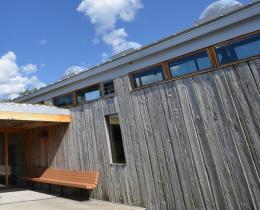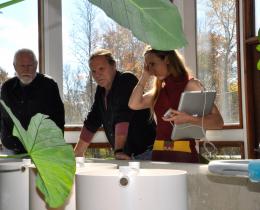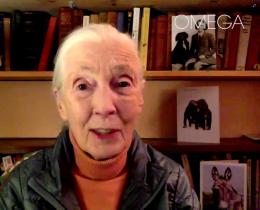In the classroom at the Omega Center for Sustainable Living (OCSL), a small group of architects listened intently as Omega Institute chief executive officer Robert "Skip" Backus described the hurdles they might encounter as they embark on the highest levels of green building.
The architects, representing two groups with projects planned in Dutchess County, New York, came to Omega to gain a deeper understanding of the challenges—and rewards—of constructing the OCSL, the first building in the world that received both LEED Platinum and Living Building Challenge certification.
They were referred to Omega by the International Living Future Institute, which directs the Living Building Challenge, the most rigorous green building standard in the world.
In a scene that has repeated itself many times since the OCSL opened in 2009, Backus offered the visitors a full accounting of the build—everything from the engineering challenges and regulatory hurdles, to issues around materials selection and waste recovery.
“Whoever are the prime drivers of your project will need to be prepared to go the distance,” Backus said, “because you don’t know what will come up.”
One of the groups, Wassaic Commons, is embarking on an adaptive reuse of a 100-year-old barn located in the center of Wassaic, a tiny Dutchess County hamlet not far from the Connecticut border. Wassaic has a fire department, a post office, a tavern, a general store that is intermittently open, and not much else. But it sits in the shadow of a mostly shuttered state psychiatric facility that is being eyed by developers. And the hamlet is served by a stop on the Metro-North commuter railroad line. The architects want to turn the barn into a public space.
“Either a building like this remains empty for the foreseeable future,” said architect and co-owner Christina Kwak of Frederick Fisher and Partners, “or we can convince the right people that it’s worth having this be a space that can be used by the public and be of service to the hamlet.”
Kwak and her associates see the Living Building Challenge as a growing body of proven work—beginning with the OCSL and now including dozens of projects that have received some level of LBC certification—that models a new way of thinking.
“We are all architects that come from a tradition of building that has been going on for eons,” architect Matthew Schnepf said. “And it’s wasteful. And it’s not sustainable. And we have to change. And we are all changing—individually and in our own firms.”
OCSL as a "Great Example and Precedent"
The OCSL, they say, stands as a valuable resource, particularly when assessing how to deal with regulatory agencies that might be hesitant to consider new ideas outside of established building, health, and environmental codes.
“This,” architect Ryan Harvey said, “is a great example and precedent to convince the people that need convincing.”
Another adaptive reuse project is in the early planning stages by MASS Design Group in Poughkeepsie, a city in Dutchess County. The developers have yet to publicly disclose details about the project, other than to say it is part of MASS Design Group’s Fringe Cities initiative. The firm describes a fringe city as an “independently situated, small city” that has been negatively impacted by the urban renewal movement of the mid 20th century.
MASS got its start building health facilities in Africa and has since diversified its portfolio worldwide. LBC construction aligns with the group’s ethos, according to Caroline Alsup, a senior design associate.
“I think that, as our body of work is growing, there is a project that we will want to pilot for LBC,” Alsup said. “We hope we can make LBC part of our practice more generally.”
Design associate Evelina Knodel said that being at the OCSL reminded her that there is great value in trail blazing things, particularly when there are so many challenges.
“I am even more excited about taking on that challenge,” she said, “but also trying to pave the way for others.”



